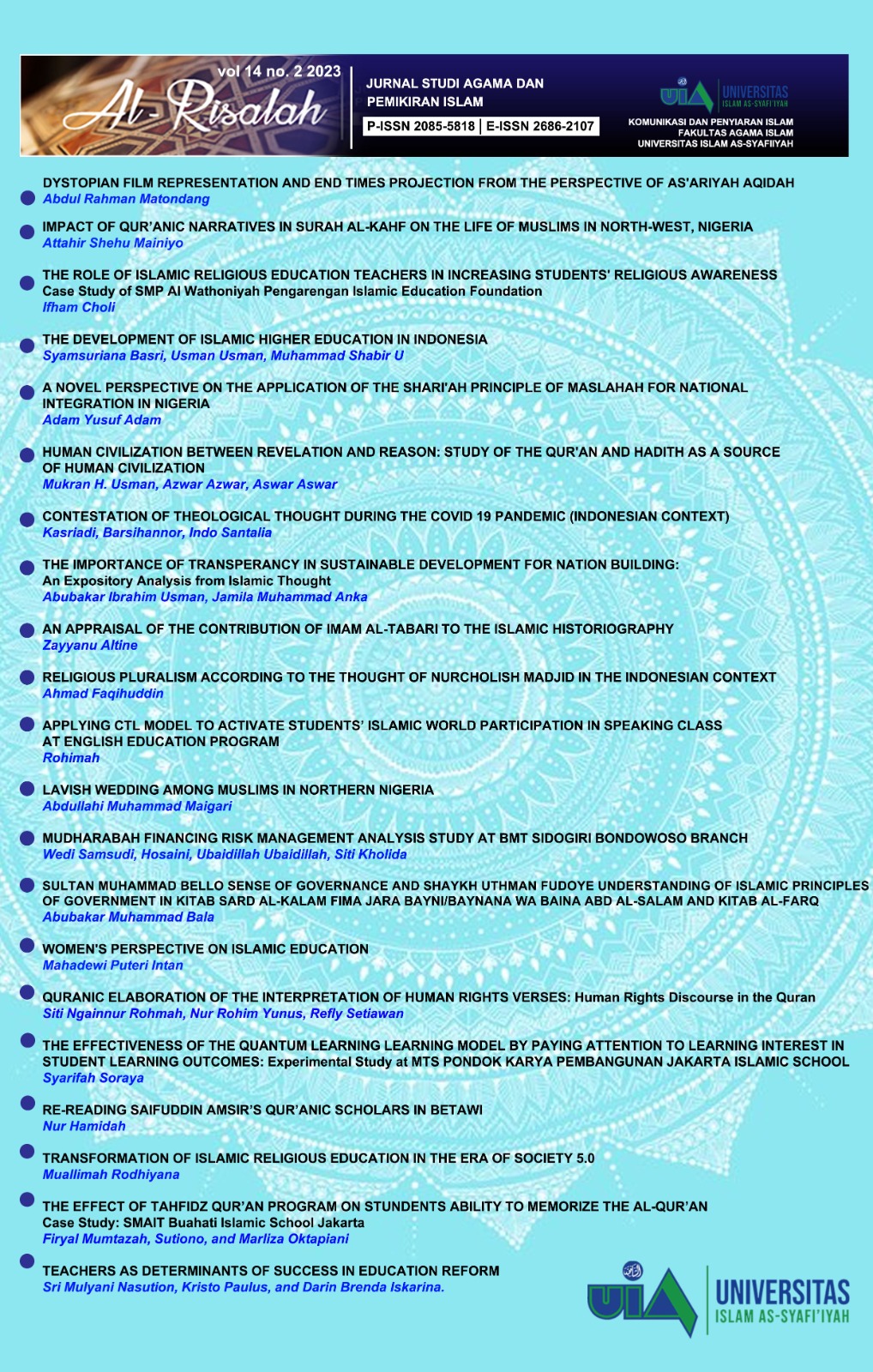DYSTOPIAN FILM REPRESENTATION AND END TIMES PROJECTION FROM THE PERSPECTIVE OF AS'ARIYAH AQIDAH
Abstract
This study aims to analyze the representation of dystopian films and their projections towards the end of time based on the perspective of Yusuf Aqidah As'ariyah. The method used in this study is a qualitative method by using reference searches by analyzing research texts related to dystopian films and understanding of the aqidah as'ariyah about the projection of the end of time. The results of the search were analyzed based on the perspective of As'ariyah's aqidah regarding the main ideas specifically about the future and the end of time. The results of this study indicate that the representation of dystopian films often shows humans struggling to survive in a world full of chaos, but from the perspective of As'ariyah belief, humans must prepare themselves spiritually and do good deeds in order to get a good place in the afterlife.
Copyright (c) 2023 Al-Risalah : Jurnal Studi Agama dan Pemikiran Islam

This work is licensed under a Creative Commons Attribution 4.0 International License.
This work is licensed under a Lisensi Creative Commons Atribusi 4.0 Internasional.
Authors who publish with this journal agree to the following terms:
- Authors retain copyright and grant the journal right of first publication with the work simultaneously licensed under a Creative Commons Attribution License that allows others to share the work with an acknowledgement of the work's authorship and initial publication in this journal.
- Authors are able to enter into separate, additional contractual arrangements for the non-exclusive distribution of the journal's published version of the work (e.g., post it to an institutional repository or publish it in a book), with an acknowledgement of its initial publication in this journal.
- Authors are permitted and encouraged to post their work online (e.g., in institutional repositories or on their website) prior to and during the submission process, as it can lead to productive exchanges, as well as earlier and greater citation of published work (See The Effect of Open Access).















